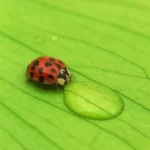In the serene landscapes where nature thrives, deer gracefully roam, shaping the ecosystem with their dietary choices. As caretakers of gardens and vineyards, the question often arises: Do deer eat grapevines? In this exploration, we unravel the mysteries of the deer’s palate and delve into whether grapevines find a place on their menu. Understanding the dynamics between deer and grapevines is not just a matter of curiosity but also holds practical implications for those seeking to protect their green spaces.
Deer’s General Diet and Preferences
Deer are herbivores with a diverse diet influenced by factors such as season, geographic location, and the availability of food sources. Their typical diet includes grass, leaves, buds, and twigs. However, deer are opportunistic feeders, adapting their preferences based on what is locally abundant. They are known to consume a variety of plants, shrubs, and trees, showcasing a level of adaptability that allows them to thrive in diverse environments. Understanding the general dietary habits of deer lays the foundation for exploring their potential interest in grapevines and the nutritional aspects that might attract them.
Grapevines as a Potential Food Source
Grapevines, with their tender leaves and succulent fruits, present an attractive option for deer seeking nourishment. In vineyard settings, the lush greenery of grapevines can be particularly tempting to deer, especially during certain seasons or stages of growth. The appeal lies not only in the flavor but also in the moisture content of the leaves. Deer may target grapevines as part of their foraging routine, posing a potential challenge for those who cultivate these vines. Examining grapevines as a potential food source for deer involves understanding what makes these plants appealing and the role they play in the deer’s broader dietary choices.
Risks and Considerations
While deer consuming grapevines might seem harmonious with nature, it comes with risks and considerations. The browsing activity of deer can impact the health and productivity of grapevines, especially in vineyards where cultivation is meticulous. Overgrazing can stress the vines, affecting fruit production and the overall vitality of the plants. Additionally, the potential for deer to carry ticks or other pests raises concerns for both the vines and the surrounding environment. As we explore the relationship between deer and grapevines, it’s crucial to weigh the risks and consider responsible management practices to mitigate potential negative impacts on both the deer and the cultivated greenery.
Managing Deer and Grapevines
Effectively managing the coexistence of deer and grapevines requires thoughtful strategies to protect both the agricultural investment and the natural habits of these graceful creatures.
Strategies for deterring deer from grapevines:
- Fencing: Install deer-resistant fencing around vineyards or garden areas to create a physical barrier.
- Repellents: Utilize natural or commercial repellents to deter deer from approaching grapevines.
- Alternative food sources: Provide alternative, more suitable forage options to divert deer away from grapevines.
Responsible management practices to balance deer presence and grapevine protection:
- Monitoring: Regularly observe deer activity and adjust management strategies accordingly.
- Collaboration: Work collaboratively with local wildlife authorities to implement sustainable deer management practices.
- Habitat preservation: Preserve natural habitats to ensure deer have ample natural food sources, reducing their reliance on cultivated areas.
- Tough durable deer netting; Protects landscape and crops from deer and other animals
- Economical, lightweight deer protection; Black UV-resistant deer netting
- Reusable mesh deer fence; Stops deer and other animals from eating shrubs, berries, and vegetables
- Easy to use roll of deer fence netting; Attaches easily to posts and trees
- Do it yourself deer netting for protecting trees, shrubs, orchards and crops
Conclusion
In the delicate dance between deer and grapevines, finding a harmonious balance is key to the well-being of both. While grapevines may hold allure for these gentle herbivores, responsible management practices can help mitigate potential risks and preserve the integrity of agricultural spaces. By implementing deterrents, providing alternatives, and collaborating with wildlife authorities, it is possible to coexist with deer while safeguarding valuable grapevines. Ultimately, fostering a symbiotic relationship requires a nuanced understanding of the ecological dynamics at play and a commitment to preserving the beauty of both nature’s creatures and the cultivated landscapes we cherish.




